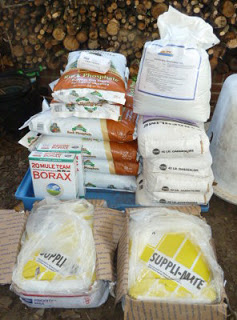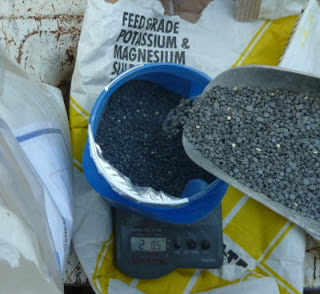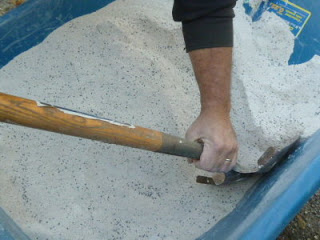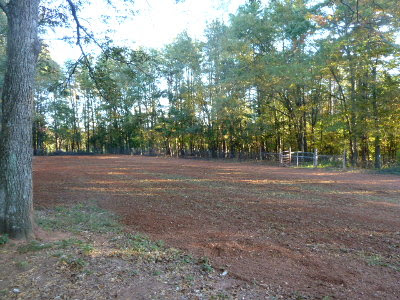

| Visitors Now: | |
| Total Visits: | |
| Total Stories: |
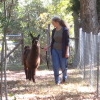
| Story Views | |
| Now: | |
| Last Hour: | |
| Last 24 Hours: | |
| Total: | |
Pasture Improvement Phase 2: Remineralizing Our Soil
At long last I can finally follow up on a post I wrote last March, “Pasture Improvement Phase 1“. The goal has been to begin to improve the poor soil and forage in our fields, and establish a diversified, healthy browse area that will provide both pasture and hay.
In my “phase 1″ post, I showed you how Dan scraped hundreds of sapling trees, blackberry vines, and poison ivy from that field. Later, I shared the results of two soil tests we had done. After that, it was simply a matter of finding the recommended soil amendments, tilling them in, and planting. Or so I hoped.
If I had wanted chemical fertilizers, I could have bought them easily at any local garden center. But I was looking for bulk dolomite, rock phosphate, sul-po-mag, manganese sulfate, cobalt sulfate, and boron, needing enough to treat half an acre. My problem was that none of this was available locally.
Just last week I was finally able to get the last of everything we needed. I eventually found dolomite in 40# bags at Lowes. My local feed store was able to order 28# bags of rock phosphate for me. Due to cost however, I was only able to get the minimum recommendation, which is about half the phosphorous our soil really needs. Everything else I had to order from out of state. The hardest one to track down was the cobalt sulfate. Even though I only needed 2.5 ounces, it is important for my goats. They need cobalt to synthesize vitamin B1. I finally was able to order it from a pottery and ceramics supply house, because it is used for blue glazes.
On Dan’s next day off, we measured everything according to the soil report recommendations…
… mixed ….
…. and broadcast the mixture over the field. These minerals will not only improve soil and plant health, but hopefully our goats’s health as well. It is so much better for them to get their minerals from forage, rather than from packaged mineral supplements or mineral blocks.
The next day our neighbor came to till it in.
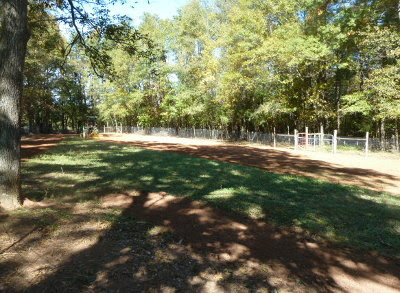 |
| Hard to see in the sun and shadows, but that’s him, toward the upper left |
Tilling was important because some of the amendments are water soluble. If they hadn’t been worked into the soil, the first heavy rain would have washed them all down the hill.
After that, we planted: pasture grasses, legumes, herbs, even root crops to feed the goats and improve the soil. For winter forage, I planted wheat, oats, annual rye, and Austrian winter peas. Because it’s feasible in our climate, a winter pasture is a must in my thinking. Goats crave fresh forage in the winter. Another plus is that we’ll need less stored hay.
Until the pasture is well established, we have to keep out the chickens and goats. The chickens especially, would love to eat all my seed.
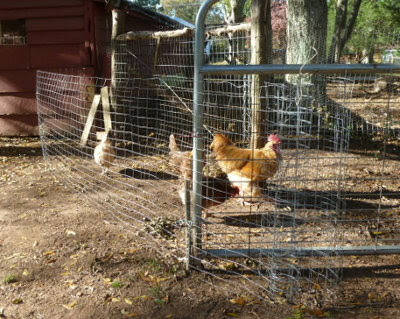 |
| Routing the chickens to another area with a bit of rabbit fence. |
For the chickens, a short length of rabbit fence was run between the chicken gate and the gate to the front pasture. For the goats, something sturdier is a must.
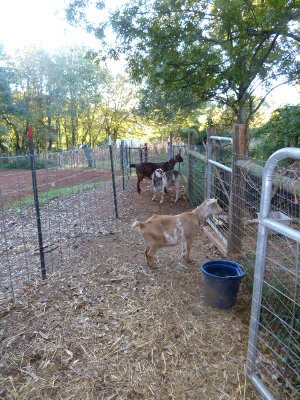 |
| What are they looking at? Riley, who is always an object of great interest. Who is Riley? Click here to find out. |
Dan ran a few t-posts into the ground and wired cattle panels to it. This corridor gives the girls access to the old corn and cowpea field from the goat shed.
This is a huge project checked off the to-do list. One that is a vital step toward feeding our animals from our land. We will tackle the other pasture areas, one at a time, with the same goal in mind. For now, I’m breathing a huge sigh of relief that this one is done. The only thing left to do is pray for gentle rains and watch it grow.
2012-11-27 10:26:07
Source: http://www.5acresandadream.com/2012/10/pasture-improvement-phase-2.html
Source:



